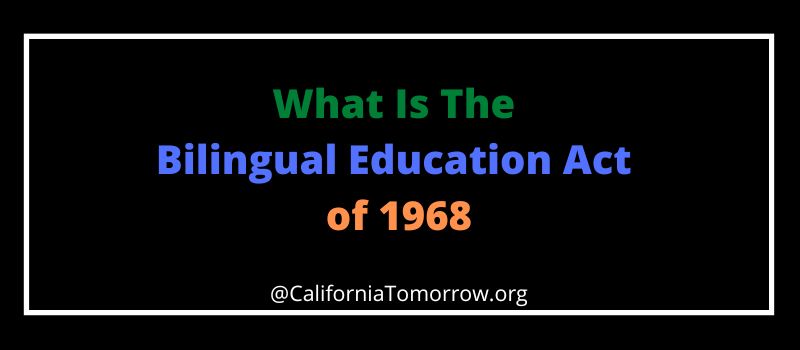In this session, we will be explaining What Is The Bilingual Education Act of 1968 and what are its primary purposes in detail.
Note: what we shared below is just for reference purposes only.

What Is The Bilingual Education Act of 1968
Under the Bilingual Education Act of 1968, states were encouraged to establish and finance programs aimed at assisting bilingual students in transitioning into English classrooms.
To ensure proper implementation of these programs, the US Department of Education issued a letter of guidance in 1974, outlining the criteria for states to receive federal funds for their implementation.
The payoff letter stated that state education agencies must develop a plan outlining the objectives, strategies, and resources required for successful program implementation. It also outlined that these agencies must have plans in place to evaluate the success of their programs and provide full financial support for bilingual education activities.
Finally, the payoff letter provided guidance on how to appropriately distribute funding between English-only classrooms and those with bilingual instruction.
To ensure that adequate resources are provided for bilingual education programs, the payoff letter also stated that states must allocate funds for staff development in areas such as curriculum design and materials.
Additionally, it outlined that states should use their own financial resources to supplement any federal funding they receive for their programs.
What Was The Primary Purpose of the Bilingual Education Act in 1968
The Bilingual Education Act of 1968 was passed with the primary purpose of providing equal educational opportunities for students of limited English proficiency (LEP).
The Act aimed to ensure that these students would receive language instruction that was appropriate to their native language or dialect.
The Act also provided funding for education programs, resources, and research that would help ensure that all students, regardless of their native language, would receive a quality education.
Additionally, it mandated that Federal agencies take steps to ensure that LEP students were able to participate fully in American society. This included providing materials and resources in the native language of the students and ensuring that their native language was considered in all educational decisions.
Impact of The Bilingual Education Act of 1968
The Bilingual Education Act of 1968 has had a significant positive impact on academic achievement for students of limited English proficiency (LEP).
Research studies have consistently shown that students who receive language instruction in their native language achieve higher academic scores than those who receive instruction only in English.
Furthermore, students who were provided with resources and materials in their native language were more likely to participate in educational activities and demonstrate mastery of concepts.
In addition, Federal agencies have implemented language policies that ensure that language proficiency is taken into account when making educational decisions. These efforts have helped to create an environment of cultural understanding, which has been shown to increase academic achievement for LEP students.
The Bilingual Education Act of 1968 has been met with some criticism, primarily stemming from its potential economic costs and the perception that it can be an obstacle to the assimilation of immigrants into American society.
Additionally, some critics have argued that the Act does not adequately address the needs of students who lack basic English proficiency or those who are not proficient in either their native language or English.
Finally, there have been some concerns that the implementation of the Act may lead to increased segregation of students according to language and ethnicity.
Despite the criticisms, research has overwhelmingly demonstrated that the Act has been successful in providing equal educational opportunities for students of limited English proficiency and has had a positive impact on their academic achievement.
Hope you got the correct answer to the question What Is The Bilingual Education Act of 1968 & Its Purpose